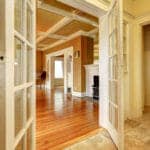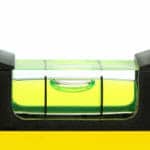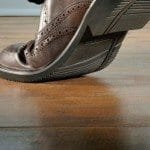Floors
 Bouncy and Spongy Floors Can Be A Structural Concern Or Merely An Annoyance
Diagnosing why and the seriousness of a spongy, bouncy and springy floors.
Bouncy and Spongy Floors Can Be A Structural Concern Or Merely An Annoyance
Diagnosing why and the seriousness of a spongy, bouncy and springy floors.
 House With Sloping Or Sagging Second Floor but First Floor is Level
Sloping floors may be a warning sign of structural problems.
House With Sloping Or Sagging Second Floor but First Floor is Level
Sloping floors may be a warning sign of structural problems.
 Sloping and Sagging Floors: What’s Acceptable and When A Structural Concern
Sloping floors are often one of the warning signs that structural engineers look for when analyzing a house.
Sloping and Sagging Floors: What’s Acceptable and When A Structural Concern
Sloping floors are often one of the warning signs that structural engineers look for when analyzing a house.
 How To Measure If Your Floor Is Sloping, Level Or Sagging: When Serious?
Don't guess if a floor is sloping or out of level, because there are five quick and easy ways to measure.
How To Measure If Your Floor Is Sloping, Level Or Sagging: When Serious?
Don't guess if a floor is sloping or out of level, because there are five quick and easy ways to measure.
 Creaking Floors – The 4 Main Reasons
Floor creaking may be related to the installation of the floor or to the homes foundation settling. Other reasons include...
Creaking Floors – The 4 Main Reasons
Floor creaking may be related to the installation of the floor or to the homes foundation settling. Other reasons include...
 Creaking Floors
When walking across the floor or going up and down the steps, is there a creaking sound. Usually only in a couple of places? If so, then...
Creaking Floors
When walking across the floor or going up and down the steps, is there a creaking sound. Usually only in a couple of places? If so, then...